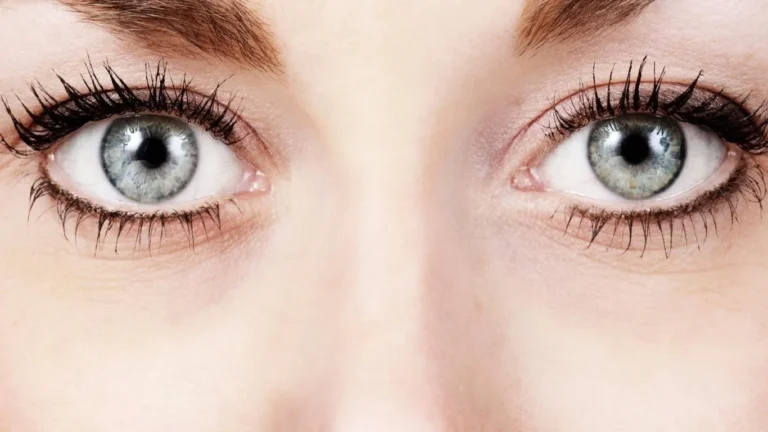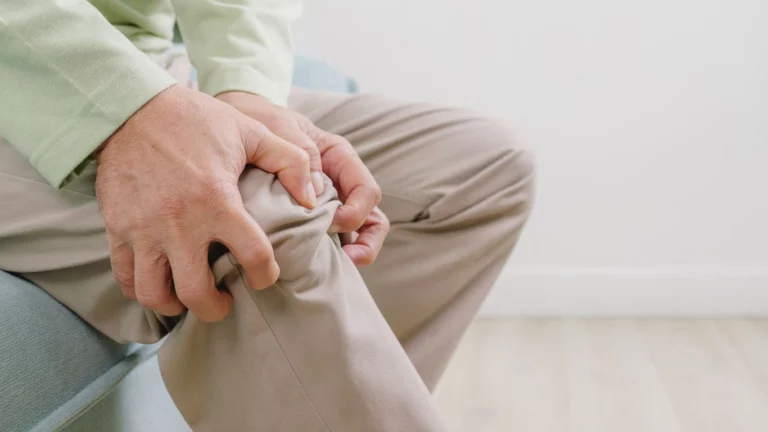How Mild Intermittent Fasting Dramatically Supports BP Regulation
Let’s talk about something I get asked a lot in the clinic — can a little bit of fasting actually help with blood pressure? Spoiler alert: yes, especially when it’s done gently and intentionally. As someone who’s been managing hypertension with patients for years, I’ve seen firsthand how mild intermittent fasting supports BP regulation in real-world scenarios. We’re not talking extreme or trendy here — just slight adjustments that can lead to noticeable changes. And trust me, you don’t have to starve yourself or chug celery juice all day. Let’s break it down in a way that makes sense and fits real life.
Why Blood Pressure Deserves a Front Row Seat in Your Wellness Plan

Blood pressure isn’t just a number you get during your annual checkup — it’s a daily rhythm that tells a bigger story. I like to think of it as the background beat of your cardiovascular system. When it’s too high, your organs are basically under silent stress all the time. And when left unchecked, that pressure adds up. The good news? It’s also one of the most modifiable risk factors we have — especially through lifestyle.
We often talk about salt, exercise, and medication (and rightly so), but what many folks don’t realize is that meal timing and metabolic rhythm play a surprisingly big role. I’ve had patients whose numbers shifted just from eating within a shorter window. And no, they weren’t skipping meals or feeling deprived — just being a bit more strategic.
How Mild Intermittent Fasting Supports BP Regulation (Without Making You Hangry)

What Do We Mean by “Mild” Intermittent Fasting?
Let’s clear this up first — when I say “mild” intermittent fasting, I’m not talking about intense 24-hour fasts or those rigid 5:2 plans you see online. We’re looking at something way more doable: like a 12:12 or a 14:10 fasting window (that’s 12 or 14 hours of fasting, and the rest of the day for eating). This might simply mean stopping dinner by 7 PM and having your first meal around 9 AM or so. That’s it.
In clinical terms, this kind of gentle fasting gives your body enough time to reset without triggering cortisol spikes or energy crashes. I’ve seen patients adopt this approach with zero dietary changes — just timing tweaks — and still experience lower systolic readings within a few weeks.
So What’s the Mechanism? Let’s Get Nerdy (But Not Too Nerdy)
When you give your body a break from constant digestion, a few really cool things happen:
- Insulin sensitivity improves – and that’s a big deal for BP because insulin resistance contributes to hypertension.
- Inflammation goes down – chronic low-grade inflammation can mess with endothelial function, which affects how well blood vessels relax.
- Sodium handling gets better – the kidneys start doing their job more efficiently, which helps with fluid balance and pressure control.
In short: your vessels chill out, your body processes food more efficiently, and you start trending toward balance instead of overload.
What I’ve Seen in My Practice
Now here’s where it gets personal. I had a patient — let’s call her Lisa — who was struggling to control her blood pressure despite being on two medications. She wasn’t overweight, didn’t eat a ton of salt, and walked her dog twice a day. We looked at her eating habits and realized she snacked late into the night while watching TV. Not because she was hungry, just out of habit.
I suggested a soft approach: stop eating after 7:30 PM and keep breakfast after 9 AM. She was skeptical but agreed to try. Six weeks later, her BP dropped by 10 points. We didn’t touch her meds. No drastic diet changes. Just time awareness. And she said she felt more “in rhythm,” her words, not mine. That’s when I really started paying closer attention to this pattern with others too.
Fasting Is Not About Deprivation — It’s About Space
I tell patients this all the time: we don’t fast to punish the body — we fast to give it room to breathe. Especially when we’re aiming to regulate something as sensitive as blood pressure. Our modern eating habits have us constantly in fed-state mode. Mild intermittent fasting creates natural pauses that let our internal systems reset.
Think of it like sleep — you don’t feel deprived because you didn’t stay awake 24/7, right? In the same way, your digestive and cardiovascular systems benefit from a little rest too. And the best part? Your body doesn’t need perfection. It just needs consistency and a bit of patience.
Big Benefits, Small Changes: The Case for Starting Slow
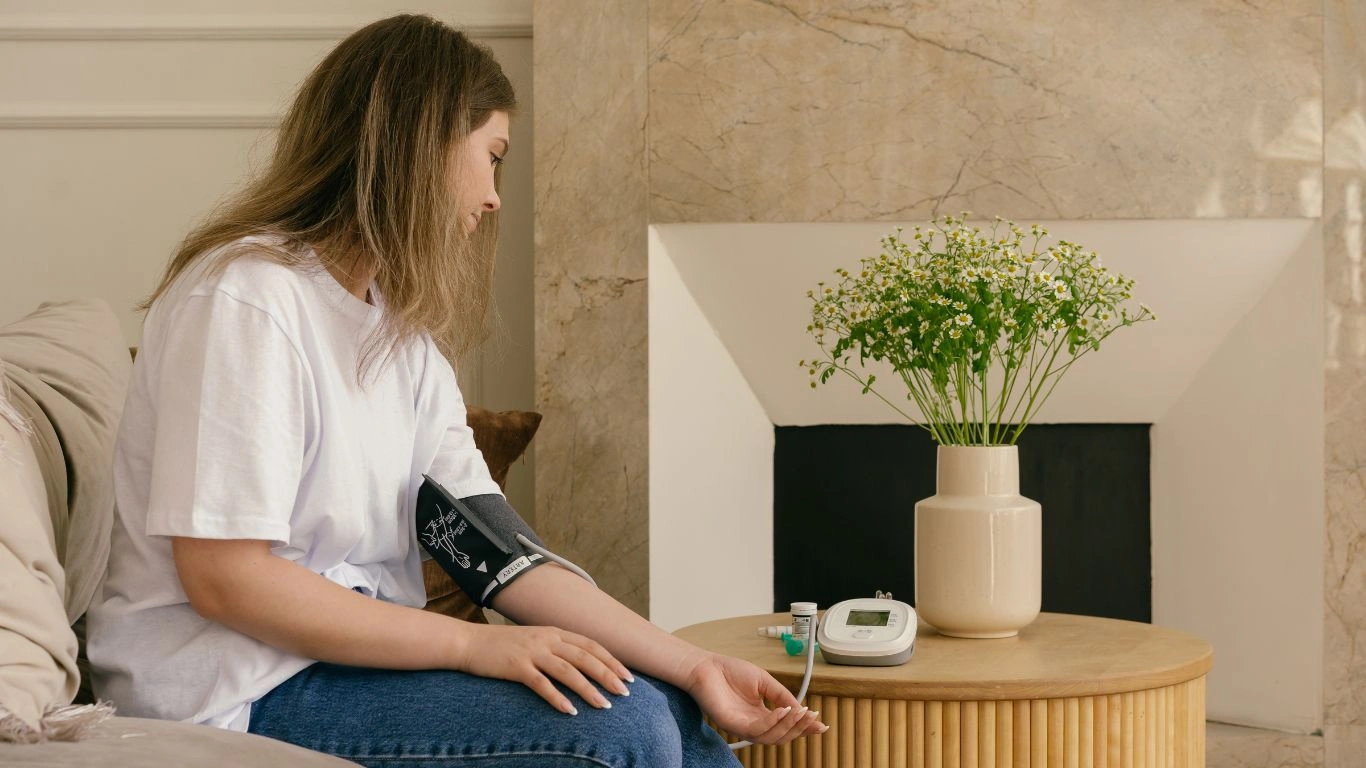
Most people overestimate what they need to change and underestimate the power of simple shifts. That’s especially true when it comes to lifestyle tweaks for high blood pressure. Intermittent fasting — in its mildest form — is accessible, free, and surprisingly sustainable once you find a rhythm that fits your day.
- Start with 12 hours – something like 8 PM to 8 AM is a gentle way to ease in.
- Hydrate well during the fasting window – water, herbal tea, even black coffee (if it agrees with you).
- Don’t skip meals, just shift them – quality matters more than quantity here.
And if you’re already on BP meds, definitely loop in your physician before making fasting part of your routine. I always review my patients’ full picture — meds, sleep, stress, labs — before giving the green light. Safety first, always.
The Hormonal Side of Mild Fasting: What Most People Don’t Realize
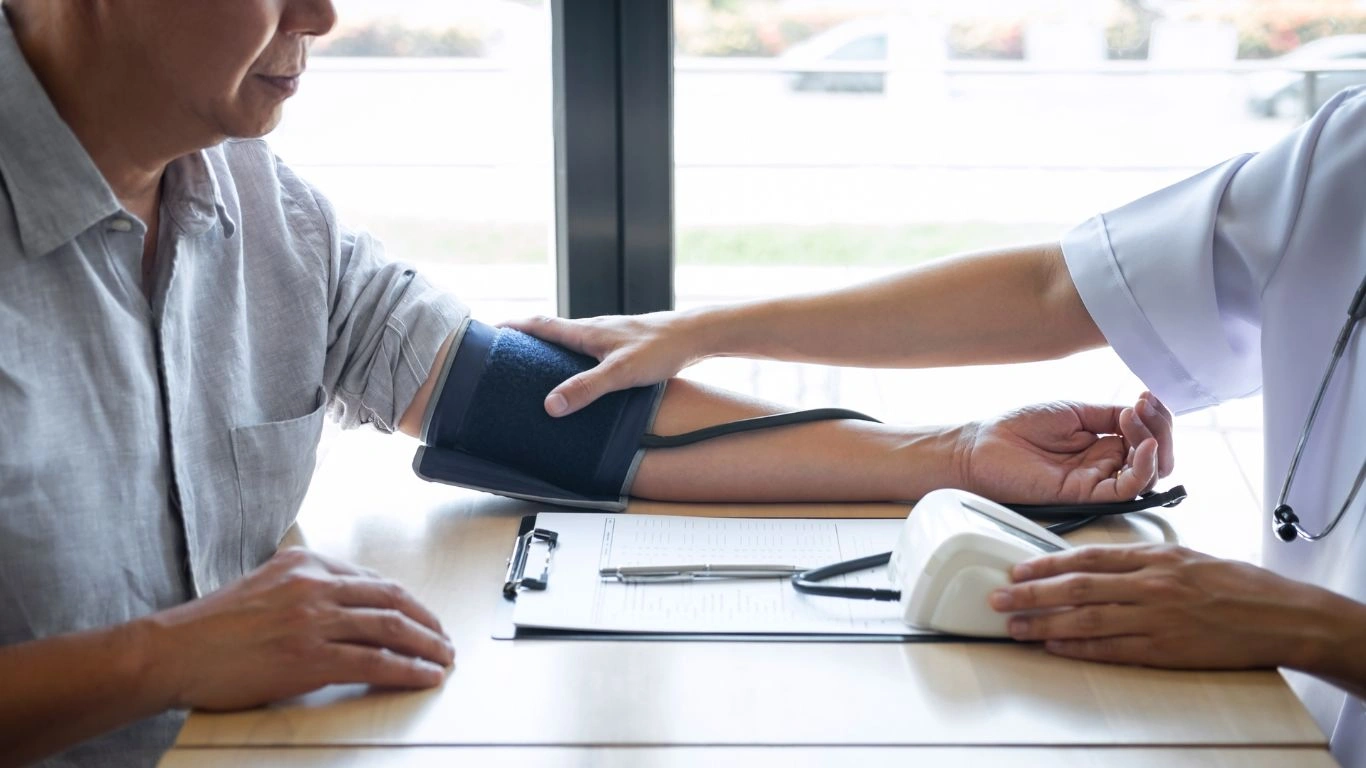
Something that gets overlooked a lot in discussions about how mild intermittent fasting supports BP regulation is the hormonal piece. And let me tell you — hormones aren’t just for teenagers or people dealing with thyroid issues. They’re central to how your body manages blood pressure.
When you fast, even mildly, several things start to shift:
- Insulin levels drop – Lower insulin means your body can switch from storing mode to burning mode, reducing overall metabolic load.
- Leptin and ghrelin rebalance – That’s your satiety and hunger team. Over time, this can reduce overeating and snacking that may contribute to BP spikes.
- Cortisol stabilizes – When done gently, fasting may actually reduce chronic cortisol levels, which is huge since cortisol is notorious for pushing BP up when it’s constantly elevated.
It’s not magic, and it’s definitely not overnight — but these internal shifts add up. I’ve had patients report feeling more “even” throughout the day, both mentally and physically, after sticking with a consistent eating window for 3–4 weeks. Less racing heart, fewer stress peaks, and surprisingly, better sleep too. All of that plays into BP control more than most people think.
Food Quality Still Matters (Even If You’re Eating in a Shorter Window)
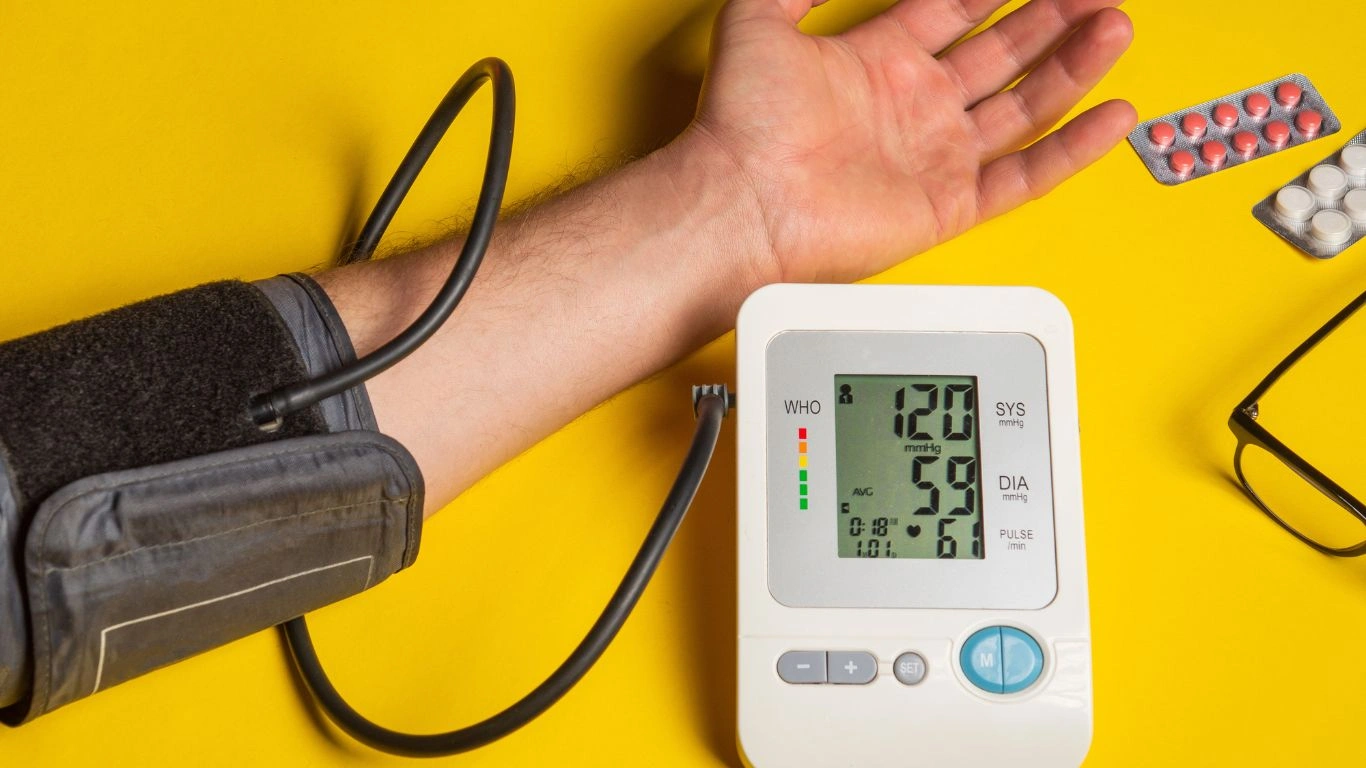
Now here’s where I want to pause and emphasize something important: intermittent fasting isn’t a free pass to eat whatever you want during your eating window. I’ve had patients try that, and well… let’s just say results were not what they hoped for.
If you’re eating processed foods, sugary snacks, and sodium-packed takeout during your feeding window, you’re not giving your body the tools it needs to support vascular health. You’re just squeezing junk into a smaller timeframe. Not helpful.
So What Should That Eating Window Actually Look Like?
Here’s the basic blueprint I usually recommend — and yes, this varies based on individual needs, meds, and health status:
- Focus on potassium-rich foods – Think leafy greens, sweet potatoes, beans, avocados. Potassium helps counteract sodium and support kidney function.
- Whole grains over refined ones – Barley, quinoa, and oats have been shown to support BP and heart health.
- Healthy fats – Olive oil, nuts, seeds. Not just because they’re tasty — they help reduce inflammation and support artery flexibility.
- Protein with purpose – Salmon, lentils, tofu, eggs. Protein helps stabilize blood sugar and reduces post-meal BP spikes.
And here’s a little tip from my own routine — I prep my go-to “BP bowl” a couple times a week. It’s got quinoa, kale, roasted chickpeas, olive oil drizzle, and some grilled salmon or tofu on top. Easy, fast, and totally satisfying. I mention it to patients all the time, and several have made it their weeknight staple.
When Fasting Doesn’t Help (And What to Watch Out For)

Okay, real talk — mild intermittent fasting isn’t a one-size-fits-all fix. There are definitely scenarios where it can backfire, especially when it’s not tailored to your body’s needs. I’ve seen patients go too hard too fast, trying 16:8 windows while juggling shift work, parenting, or complex medication schedules. It doesn’t work that way.
Red Flags That Might Mean Fasting Isn’t For You (At Least Not Yet)
- You’re on multiple antihypertensive meds and prone to low BP episodes – Fasting may drop your pressure too much.
- You have a history of disordered eating – Any restrictive pattern can be triggering and potentially harmful.
- You’re underweight, frail, or recovering from illness – Your body may need steady intake to rebuild.
- You’re pregnant or breastfeeding – Nutritional demands are different here. Fasting isn’t the move.
I always tell my patients: let’s look at the whole picture. If you’ve got kidney issues, diabetes, thyroid dysfunction, or are on beta-blockers, we’ll tread carefully. I never recommend starting a fasting routine without reviewing labs, medications, and lifestyle together. That’s where trust and personalization really matter — and honestly, that’s where you’ll get the best results.
Combining Fasting with Other BP-Friendly Habits: The Synergy Effect
This is the part that gets me excited — when we start layering habits together. Because mild intermittent fasting is just one tool. When you pair it with other simple BP-lowering strategies, the effects amplify in the best way.
What I Recommend Alongside Fasting
- Consistent movement – You don’t need a gym. Walking, stretching, tai chi — they all help regulate vascular tone and improve insulin sensitivity.
- Stress management – I’ve seen patients’ BP drop 5–10 points just from adding daily breathing exercises or mindful breaks. Seriously.
- Sleep optimization – Poor sleep disrupts everything. Fasting can actually improve sleep quality by stabilizing circadian rhythms, but you need to protect that sleep window too.
- Regular monitoring – Keep track of what’s working. Home BP cuffs can be your best friend, not just something you dread using when the doctor tells you to.
One of my patients — a retired teacher — started pairing a 13-hour fasting window with daily evening walks and 15 minutes of meditation. Her numbers went from 148/92 to 126/80 over 3 months, and she was glowing by her next visit. She told me she felt “in tune” with her body for the first time in years. That’s the goal — not just lower numbers, but more ease in your day-to-day life.
Fasting doesn’t need to be flashy. It just needs to fit.
What About Older Adults or Those on Medications?

Here’s a common question I get — “Doc, is mild intermittent fasting safe if I’m already on meds for high blood pressure?” And it’s a smart question. Because yes, while the benefits can be real, the context always matters.
If you’re on medications like ACE inhibitors, ARBs, or diuretics, mild fasting might still work well — but it needs to be customized. I’ve had patients on lisinopril or losartan who did beautifully with a 12:12 or 14:10 window, but we kept a close eye on symptoms and home readings. Fasting may enhance the effects of these meds a bit, so dizziness or lightheadedness can pop up if you’re not careful, especially in the mornings.
Some Quick Pointers If You’re Taking BP Meds:
- Monitor your BP at home — especially during the first two weeks of trying out a fasting rhythm.
- Don’t change medication timing unless your provider gives you the go-ahead.
- Stay hydrated — fasting is not about restriction to the point of dehydration. Water is essential to keep blood volume stable.
- Break the fast with balanced meals — don’t go from 0 to pancakes-and-bacon. Gentle re-entry is key.
I always work closely with my patients on this. If someone’s already borderline low on meds alone, we might delay fasting until we taper the meds a bit — or opt for other lifestyle interventions first. That’s why a personalized approach is so crucial here.
Can You Fast If You Have Other Conditions Like Diabetes?

Here’s where things get a little more nuanced. If you have type 2 diabetes, mild intermittent fasting can still support BP regulation — but it requires even more careful planning. I’ve worked with plenty of patients managing both conditions, and the key is avoiding blood sugar crashes while keeping insulin resistance in check.
Intermittent fasting can improve insulin sensitivity, which indirectly helps reduce blood pressure. But if you’re on medications like sulfonylureas or insulin, you’ll need to closely monitor blood sugar levels. We don’t want any hypoglycemic episodes, especially during fasting windows.
If You Have Diabetes, Keep These In Mind:
- Always talk with your diabetes provider — do not start fasting without a medication and meal plan review.
- Track your glucose levels — ideally with a CGM if you have access to one.
- Use fasting to reduce insulin resistance — not to drastically cut calories.
One of my patients, a 61-year-old retired pharmacist, had both hypertension and type 2 diabetes. She started with a gentle 13:11 window and worked closely with her endocrinologist. After 4 months, her A1c improved, her BP dropped by nearly 15 points, and we reduced her amlodipine dose. Not overnight — but with steady progress.
Frequently Asked Questions From My Patients
“Can I have coffee during my fasting window?”
Yes — black coffee, herbal teas, and water are all fair game. Just skip the sugar, creamers, and those trendy oat milk lattes. I usually say, if it doesn’t spike insulin, you’re good.
“Will I lose weight?”
Possibly — and even modest weight loss can reduce systolic BP by 5-10 mmHg. But honestly, the goal here isn’t just weight. It’s metabolic rhythm. Weight loss can be a side effect of better balance, not the sole objective.
“Is skipping breakfast safe?”
It depends. For some, it’s an easy win. Others need breakfast to feel grounded and avoid energy dips. I usually recommend experimenting gently — not skipping meals cold turkey. Sometimes a lighter breakfast at a slightly later time is all it takes.
“How long before I see results?”
Everyone’s different, but many of my patients start noticing changes in 3–4 weeks. BP readings smooth out, energy feels more stable, and sleep improves. But give yourself time — this isn’t a 7-day detox thing. It’s about long-term sustainability.
How to Start Today (Without Stressing Yourself Out)
If you’re curious about how mild intermittent fasting supports BP regulation but don’t know where to start, here’s what I usually suggest to my patients:
- Pick a 12-hour window to start — something like 7 AM to 7 PM or 8 AM to 8 PM.
- Track your BP three times a week and jot down what you ate, how you slept, and how you felt.
- Be consistent, not perfect. Life happens. If you stretch your window on weekends, no big deal — just get back into rhythm.
Trust your body and give it time to respond. Some people notice mental clarity first, others see the numbers shift. Either way, what you’re doing is creating space for your body to do what it already knows how to do — regulate.
Final Thoughts: This Isn’t a Trend — It’s a Tool
In the end, mild intermittent fasting is not about punishment or rigid dieting. It’s about creating calm in the chaos — for your cells, your arteries, your hormones, and your daily life. And from what I’ve seen in practice, it can absolutely support better blood pressure regulation when done with care and intention.
As with any lifestyle change, the real magic is in the personalization. What works for your neighbor or cousin or coworker might not work for you — and that’s totally okay. If you’re working with a provider who understands your unique picture, you’re already ahead of the game.
References
- National Institutes of Health
- American Heart Association
- Centers for Disease Control and Prevention
- Healthline
- Mayo Clinic
Disclaimer
This article is for informational purposes only and is not a substitute for professional medical advice, diagnosis, or treatment. Always consult with a qualified healthcare provider before making any changes to your diet, medication, or lifestyle — especially if you have a chronic condition or take prescription medications.

Dr. Gwenna Aazee is a board-certified Internal Medicine Physician with a special focus on hypertension management, chronic disease prevention, and patient education. With years of experience in both clinical practice and medical writing, she’s passionate about turning evidence-based medicine into accessible, actionable advice. Through her work at Healthusias.com, Dr. Aazee empowers readers to take charge of their health with confidence and clarity. Off the clock, she enjoys deep dives into nutrition research, long walks with her rescue pup, and simplifying medical jargon one article at a time.

